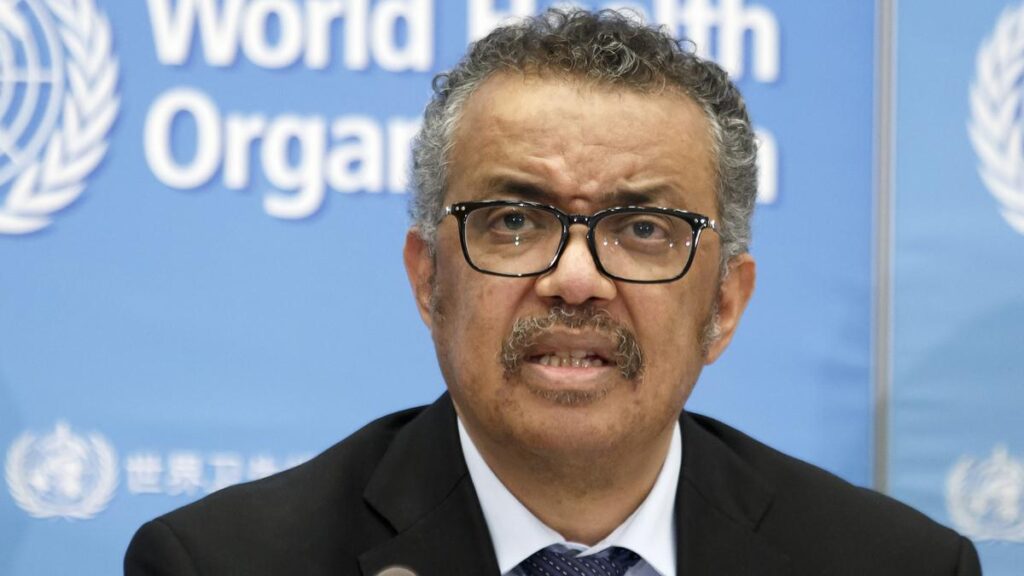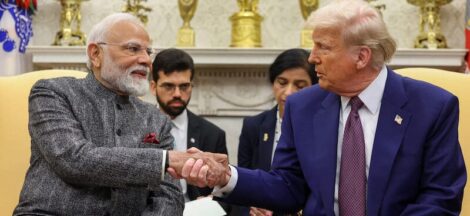By Dr. Gyan Pathak
At a time when several international health programmes across the countries have been adversely impacted after withdrawal of the United States from the World Health Organization (WHO) following an announcement by President Donald Trump on January 20, 2025, the finalization of the international agreement on pandemic reached yesterday April 16, 2025, brings new hopes creating a history.
The draft global agreement, which aims at improving how the world prepares for and responds to future pandemics, prepared after over three years of negotiations, that was started in December 2021 in the aftermath of the COVID-19 pandemic that had shaken the world, will be submitted to the 78thWorld Health Assembly in May for consideration and adoption. The assembly, which is the UN’s highest forum for global health, is set to begin its session on May 19. If the draft is adopted, it will be subject to ratification by individual nations.
It is saddening that the United States did not participate in the final round of negotiations, as per media reports, following its January announcement to withdraw from the global health body, and would not be bound by the pact.
It is worth recalling that in the aftermath of COVID-19 pandemic, the WHO member states agreed on the urgent need for a legally binding international instrument. Subsequently, the International Negotiating Body (INB) was established. After 13 formal rounds of negotiations since December 2021, the draft was finalized in the early hours of Wednesday, April 16, 2025 in Geneva. The best thing is that there has been a consensus on the draft.
WHO Director-General Tedros Adhanom Ghebreyesus, said, “The nations of the world made history,” adding “In reaching consensus on the Pandemic Agreement, not only did they put in place a generational accord to make the world safer. They have also demonstrated that multilateralism is alive and well and that in our divided world – nations can still work together to find common ground and a shared response to shared threats.”
The draft outlines a framework for strengthening international collaboration, equity and resilience in the face of future global health threats. The key elements of the proposed agreement included a commitment to a “One Health” approach to pandemic prevention, stronger national health systems, setting up a coordinating financial mechanism, and creating a globally coordinated supply chain and logistics network for health emergencies.
The draft also proposes a new pathogen access and benefit-sharing system, increased support for technology and knowledge transfer as well as capacity-building, and outlines a skilled, trained and multidisciplinary national and global health emergency workforce.
However, the draft text has affirmed national sovereignty in public health decisions. It states explicitly that nothing in the agreement gives WHO the authority to mandate health measures such as lockdowns, vaccination campaigns, or border closures.
The draft global agreement was considered a breakthrough for health equity by INB Co-Chair Precious Matsoso of South Africa. “The negotiations, at times, have been difficult and protracted. But this monumental effort has been sustained by the shared understanding that viruses do not respect borders – that no one is safe from pandemics until every one is safe,” she said.
Fellow Co-Chair Anne-Claire Amprou of France added that the agreement lays the foundation for a stronger, more equitable global health security architecture. “This is a historic agreement for health security, equity and international solidarity,” she said.
Speaking at the conclusion of the meeting, WHO Director-General Tedros said, “This achievement is not just a diplomatic success,” but it also “reflects your resilience, unity and unwavering commitment to the health and wellbeing of people everywhere.”
The importance of this draft global agreement lies in the lessons learnt in the aftermath of COVID-19 pandemic, which exposed critical vulnerabilities in global health systems and stark inequalities in access to diagnostics, treatments, and vaccines.
The Corona virus had claimed nearly 7 million lives worldwide, severely disrupted economies across the nations, and overwhelmed healthcare services across the globe, in every country. At the same time, the pandemic triggered the largest vaccination campaign in history, with over 13.3 billion doses administered globally by April 2023.
It is in this backdrop, WHO DG Tedros emphasized the agreement’s long-term significance. “The importance of this agreement goes beyond our current challenges,” he said. “It is vital for future generations – for our children and grandchildren. By building a strong framework for pandemic preparedness and response, we ensure they inherit a safer and healthier world.”
Seventy-Eighth World Health Assembly 2025 is scheduled to be held during May 19-27, in Geneva, Switzerland at WHO headquarters. The theme of this year’s Health Assembly is: One World for Health.
“One Health”, the key approach of the draft global agreement, is an integrated, unifying approach that aims to sustainably balance and optimize the health of people, animals and ecosystems. It recognizes that the health of humans, domestic and wild animals, plants, and the wider environment (including ecosystems) are closely linked and interdependent. While health, food, water, energy and environment are all wider topics with sector-specific concerns, the collaboration across sectors and disciplines contributes to protect health, address health challenges such as the emergence of infectious diseases, antimicrobial resistance, and food safety and promote the health and integrity of our ecosystems. By linking humans, animals and the environment, “One Health” approach can help to address the full spectrum of disease control – from prevention to detection, preparedness, response and management – and contribute to global health security. (IPA Service)




 A Strong Indian Economy Based On Equity And Jobs Can Only Take On Trump’s Tariff War
A Strong Indian Economy Based On Equity And Jobs Can Only Take On Trump’s Tariff War 